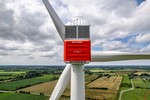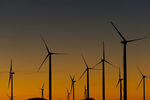05/16/2006
South America - Wind shift caused by global warming
An important wind circulation pattern over the Pacific Ocean has begun to weaken because of global warming caused by human activity, something that could alter climate and the marine food chain in the region, new research suggests. It's not clear what climate changes might arise in the area or possibly beyond, but the long-term effect might resemble some aspects of an El Niño event, a study author said. El Niño boosts rainfall in the southern United States and western South America and brings dry weather or drought to Indonesia, Malaysia and elsewhere in the western Pacific. The slowdown might reduce populations of tiny plants and animals up through the fish that eat them, because of reduced nutrition welling up from the deep, said the author, Gabriel Vecchi.
Vecchi, a visiting scientist at a National Oceanic and Atmospheric Administration lab in Princeton, N.J., and colleagues presented the results in yesterday's issue of Nature. The slowdown was detected in shipboard and land-based data going back to the mid-1800s. It matches an effect predicted by computer climate simulations that trace global warming to a buildup of heat-trapping greenhouse gases, the researchers report. But simulations that consider only natural influences fail to produce the observed slowdown. So, it appears the slowdown is largely due to the man-made buildup of greenhouse gases, the researchers concluded. And the result lends more credibility to computer models that trace global warming to greenhouse gases, at least for their ability to forecast what will happen in the tropics, Vecchi said.
The study focused on what scientists call the Walker circulation, a huge wind pattern that covers almost half the circumference of Earth. The pattern traces a huge loop. Trade winds blow across the Pacific from east to west. The air rises in the western Pacific and then returns eastward at an altitude of a few miles. Then it sinks back to the surface and starts the loop again. The new study is based on barometric pressure readings. Results suggest the average wind speed in the Walker circulation has weakened by about 3.5 percent since the mid-1800s. It has weakened faster since World War II, Vecchi said. Computer simulations say the circulation might weaken another 10 percent by 2100, Vecchi said.
Vecchi, a visiting scientist at a National Oceanic and Atmospheric Administration lab in Princeton, N.J., and colleagues presented the results in yesterday's issue of Nature. The slowdown was detected in shipboard and land-based data going back to the mid-1800s. It matches an effect predicted by computer climate simulations that trace global warming to a buildup of heat-trapping greenhouse gases, the researchers report. But simulations that consider only natural influences fail to produce the observed slowdown. So, it appears the slowdown is largely due to the man-made buildup of greenhouse gases, the researchers concluded. And the result lends more credibility to computer models that trace global warming to greenhouse gases, at least for their ability to forecast what will happen in the tropics, Vecchi said.
The study focused on what scientists call the Walker circulation, a huge wind pattern that covers almost half the circumference of Earth. The pattern traces a huge loop. Trade winds blow across the Pacific from east to west. The air rises in the western Pacific and then returns eastward at an altitude of a few miles. Then it sinks back to the surface and starts the loop again. The new study is based on barometric pressure readings. Results suggest the average wind speed in the Walker circulation has weakened by about 3.5 percent since the mid-1800s. It has weakened faster since World War II, Vecchi said. Computer simulations say the circulation might weaken another 10 percent by 2100, Vecchi said.
- Source:
- Online editorial www.windfair.net
- Author:
- Edited by Trevor Sievert, Online Editorial Journalist
- Email:
- press@windfair.net
- Keywords:
- wind energy, wind farm, renewable energy, wind power, wind turbine, rotorblade, offshore, onshore



























